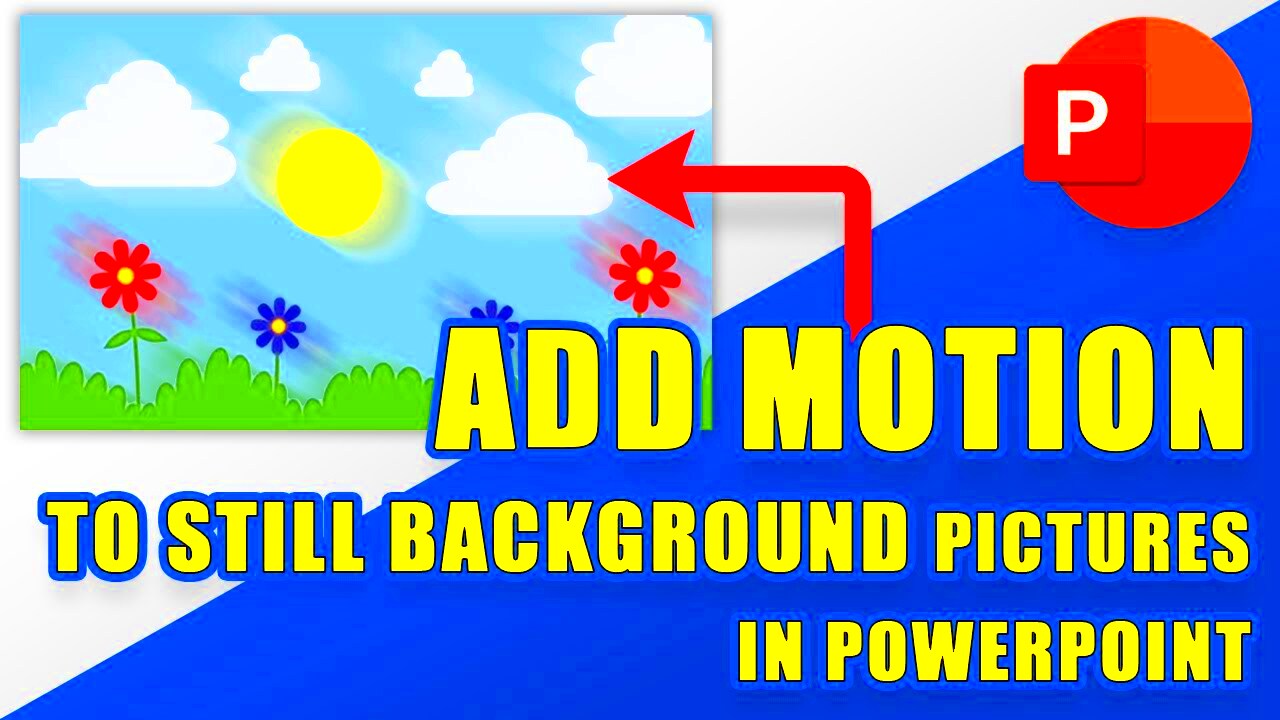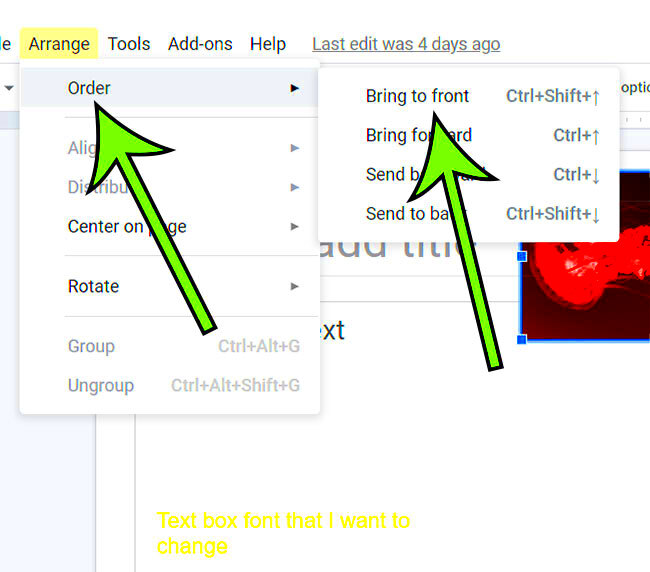Presentations are often the highlight of meetings, classrooms, and pitches. Google Slides provides a great platform to convey your ideas through simple slides. But what if you could make your presentation more engaging by adding a bit of motion? Moving images in Google Slides, such as GIFs or videos, can make a big impact. They capture attention and break the monotony of static slides, making the presentation more dynamic. Whether you’re showing a product in action, providing visual interest, or demonstrating a process, moving images help communicate your message in a more lively and compelling way.
Why Use Moving Images in Google Slides

Incorporating moving images into your Google Slides can elevate your presentation and capture the audience’s attention in ways that static images simply can't. Here's why moving images can be so effective:
- Engagement: Moving images add a level of excitement, helping your audience stay focused and interested throughout your presentation.
- Visual Appeal: Animated visuals can be more captivating than text-heavy slides, keeping your content looking fresh and professional.
- Better Explanation: Demonstrating a process or concept with a video or GIF can help simplify complicated ideas and improve understanding.
- Memorability: Visual content, especially with movement, is more likely to stick with the audience after the presentation ends.
So, whether you’re creating a business pitch or an educational lesson, integrating moving images can help you deliver your message in a more memorable and impactful way.
How to Insert Moving Images in Google Slides
Adding moving images to your Google Slides presentation is straightforward. Follow these simple steps to enhance your slides:
- Step 1: Open your Google Slides presentation.
- Step 2: Go to the slide where you want to insert a moving image.
- Step 3: Click on the Insert menu in the toolbar.
- Step 4: Select Image and then choose either Upload from computer, By URL, or Search the web to find the image you want.
- Step 5: If you're adding a GIF, make sure the file is in GIF format. For video, select the Insert option, then Video and choose the video file or paste a YouTube URL.
- Step 6: Once inserted, resize and position the moving image as needed on your slide.
It's that easy! Once the moving image is inserted, you can preview how it looks during the presentation. Keep in mind that the quality of the moving image should match the overall aesthetic of your presentation to ensure it doesn’t distract from your message.
Choosing the Right Moving Image for Your Presentation
Not all moving images are created equal, and choosing the right one for your presentation can make all the difference. A moving image can either enhance your message or become a distraction, so it's important to select images that align with the tone and purpose of your presentation. Here are a few things to keep in mind when choosing the right moving image:
- Relevance: Ensure the moving image supports your content. Whether it’s a GIF or video, it should visually represent or explain what you’re discussing. A funny GIF might not work well in a professional business presentation, for example.
- Quality: Always go for high-quality images that won't appear pixelated or distorted when projected on a large screen. Low-resolution GIFs and videos can make your presentation look unprofessional.
- Size: Large files can slow down your slides and make them lag. It’s best to use compressed files or small-sized images to keep your presentation smooth.
- Length: If you’re using a video, keep the length in check. A long video can interrupt the flow of your presentation. Short clips or GIFs often work best.
- Context: Think about the context of your presentation. For a business pitch, a clean, professional image or video will have the most impact. For a classroom, a more playful or educational video might be appropriate.
By choosing the right moving image, you ensure that it serves your presentation, making it more engaging without overwhelming your audience.
Best Practices for Using Moving Images in Google Slides
Incorporating moving images into Google Slides is a great way to spice up your presentation, but it’s important to use them wisely. Too many moving images can overwhelm your audience, while too few might not have the desired impact. Here are some best practices to ensure you're using moving images effectively:
- Limit the Number: Don’t overuse moving images. Too many animations can distract or even annoy your audience. Stick to a few strategically placed images to maintain focus.
- Use Movement to Emphasize Points: Use moving images to emphasize important points in your presentation, like a key message or concept. This helps guide your audience’s attention where you want it.
- Keep It Simple: Choose simple, clear GIFs or short videos that don’t distract from your message. Avoid overly complex animations that can be hard to follow or feel out of place.
- Ensure Compatibility: Test your moving images before the actual presentation. Not all files may work perfectly in Google Slides, so make sure they display properly on your device.
- Balance with Text: Pair your moving image with a short caption or description. This provides context for your audience and keeps your message clear.
Following these best practices will ensure that your moving images complement your content rather than overwhelm or detract from it.
Common Issues with Moving Images in Google Slides
While adding moving images to Google Slides is relatively easy, there are some common issues that can arise. Being aware of these problems and how to troubleshoot them can help you avoid disruptions during your presentation. Here are a few challenges you might face:
- Image Lag or Delay: If your moving images (especially videos) are lagging or delayed, it could be due to the file size or the internet connection. To solve this, try using smaller, compressed files or ensuring you have a stable connection during the presentation.
- Incompatible Formats: Google Slides supports GIFs, but sometimes videos might not work properly if they are in unsupported formats. Make sure your videos are in common formats like MP4. If needed, convert them before inserting them into your slides.
- Audio Issues: Videos with audio might not always play correctly, depending on the format or browser used. To avoid this, test your videos in advance and ensure the sound works as expected on your device.
- Performance Problems: Large files or too many animations can slow down your slides, especially if you're working with a slow computer. Opt for compressed images and videos to reduce strain on your device.
- Image Alignment: Sometimes, moving images can become misaligned when resizing. Ensure your image fits the slide properly and doesn’t affect the layout of your other content.
By understanding and addressing these common issues, you can ensure your moving images work seamlessly in your presentation, enhancing your message rather than hindering it.
How to Download High-Quality Moving Images for Google Slides
When adding moving images to your Google Slides, it’s essential to ensure you’re using high-quality GIFs or videos. Poor-quality images can disrupt the professionalism of your presentation and detract from the impact you're trying to make. Here’s how to find and download high-quality moving images for Google Slides:
- Use Reputable Sources: Choose websites that offer high-quality GIFs and videos for free or at a reasonable price. Popular sites include Giphy, Pexels, and Unsplash. These sites offer a large variety of high-quality options, from GIFs to video clips.
- Check Resolution: Always download GIFs or videos with a higher resolution (HD or 4K) to ensure they look crisp and clear on your slides. Avoid downloading images that are low-res, as they may appear pixelated when projected on larger screens.
- Optimize the File Size: While high resolution is important, you also need to consider file size. Large files can slow down your presentation. Use tools like EZGIF or Compressor.io to compress GIFs and videos without losing quality.
- Choose the Right Format: For GIFs, ensure they are in .gif format. For videos, MP4 is widely supported and provides great quality without large file sizes. Double-check the format of the image or video before downloading.
- License Check: Always make sure the content you download is free to use, especially for commercial purposes. Most reputable platforms offer clearly marked licenses, so you know exactly what you can and can’t use.
By following these steps, you’ll be able to find and download the best moving images to enhance your Google Slides presentation, ensuring that your visuals look great and fit seamlessly into your content.
Conclusion
Incorporating moving images in your Google Slides is a simple yet effective way to create more dynamic, engaging, and memorable presentations. Whether you’re using GIFs or videos, these visuals can help emphasize key points, capture your audience’s attention, and make your message more relatable. However, it's important to choose the right images, maintain a balance, and ensure everything works smoothly during the presentation. By following the tips and best practices outlined, you’ll be able to enhance your Google Slides with moving images that make a real impact. Keep it relevant, professional, and polished, and you'll leave a lasting impression on your audience.
FAQ
1. Can I use videos from YouTube in Google Slides?
Yes, you can easily insert YouTube videos into Google Slides by selecting Insert > Video and then pasting the YouTube URL. This is a great way to add high-quality moving images to your slides.
2. Are GIFs and videos the same when it comes to Google Slides?
Not exactly. GIFs are images with animation and are typically shorter, while videos can be longer and usually have more complex content. Both work well, but videos offer more flexibility in terms of content and duration.
3. How do I ensure my moving images don’t affect my presentation’s performance?
To avoid performance issues, keep the file sizes of your GIFs and videos as small as possible while maintaining quality. Use compression tools before inserting them into your slides, and limit the number of moving images per slide.
4. What file formats are supported for moving images in Google Slides?
Google Slides supports GIF files for animation and MP4 files for video. Make sure to use these formats to ensure smooth performance and compatibility across devices.
5. Can I use moving images in Google Slides for commercial purposes?
Always check the license of any image or video you use. Websites like Pexels and Unsplash offer free-to-use content with commercial licenses, but other platforms may require attribution or have restrictions.

 admin
admin








